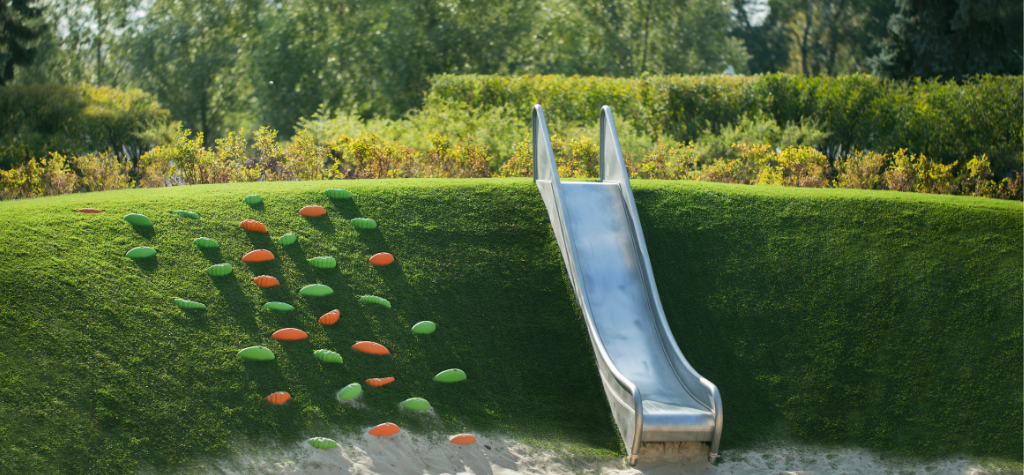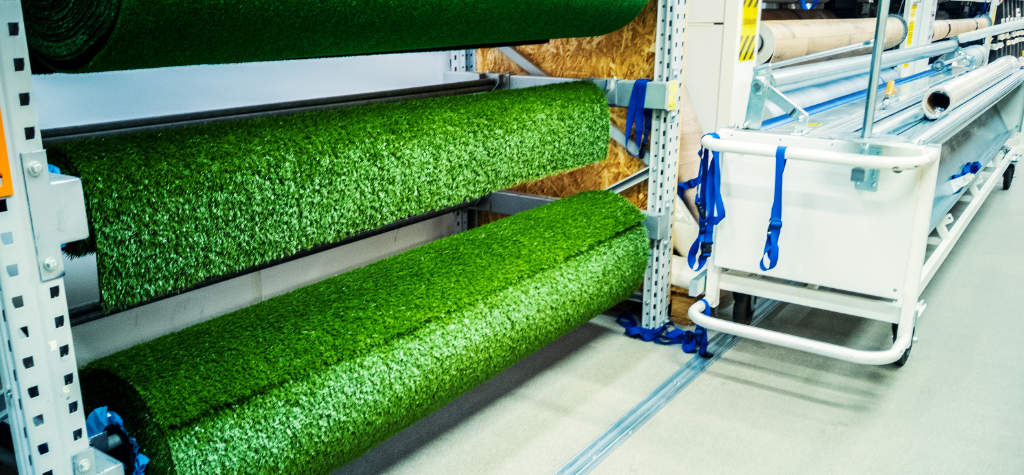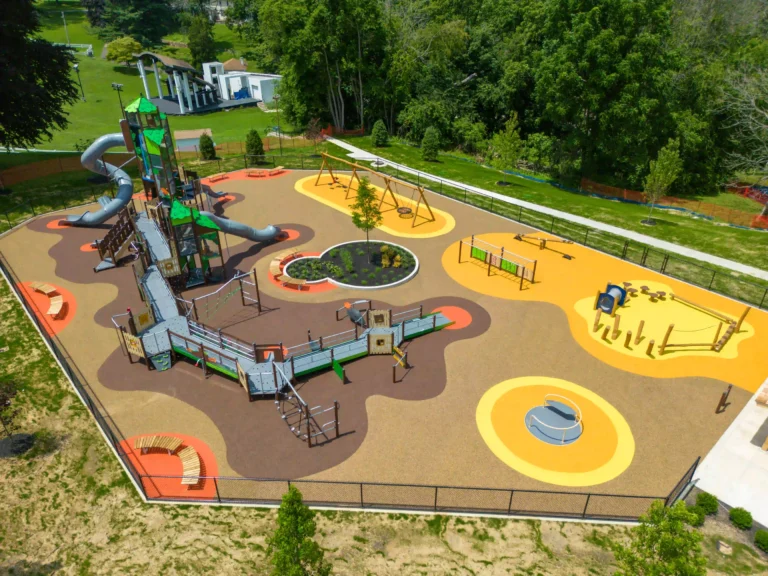Playgrounds are a haven for children, a place where they can explore, play, and learn. However, ensuring their safety is paramount. One key aspect of playground safety is the surface children play on, and this is where playground turf padding comes into play. This article will delve into what playground turf padding is, why it’s essential, and the different types available.
What is Playground Turf Padding?
Playground turf padding is a protective layer installed beneath the artificial turf in playgrounds. It’s designed to absorb impact and provide a soft, cushioned surface that reduces the risk of injuries from falls. The padding is made from various materials, including foam and rubber, and comes in different thicknesses depending on the level of protection required.
The padding works by absorbing the energy from a fall or impact, reducing the force that reaches a child’s body. This significantly lowers the risk of serious injuries such as fractures or concussions. Furthermore, the padding also provides a comfortable surface for children to play on, reducing the strain on their joints and muscles.

Why Do You Need Playground Turf Padding?
The importance of playground turf padding cannot be overstated. Here are some reasons why it’s a crucial component of any playground:
Increased Safety and Softness: The primary purpose of turf padding is to enhance safety. It provides a soft landing surface that can significantly reduce the risk of injuries from falls. Children can run, jump, and play with less worry about getting hurt. Additionally, turf padding can be customized to meet the critical fall height (CFH) requirements, which is the maximum height from which a child can fall without sustaining a life-threatening head injury
Consistent Impact Protection: Unlike natural grass or other surfaces that can become compacted over time, turf padding offers consistent impact protection. It doesn’t shift or degrade, ensuring that the level of safety remains constant over time.
Durability: High-quality turf padding is durable and can withstand heavy use without losing its shock-absorbing properties. This results in turf padding being a financially prudent choice over an extended period. Furthermore, the recyclability of turf padding contributes to its cost-effectiveness and environmental sustainability.
Weather Resistance: Turf padding is designed to withstand various weather conditions. It doesn’t freeze in cold weather or become too hot in the sun, making it a safe play surface all year round.

Different Types of Playground Turf Padding
There are several types of playground turf padding available, each with its own set of benefits. Here are some of the most common types:
Long Soft Blades: This type of turf padding features long, soft blades that mimic the feel of natural grass. It provides a high level of cushioning and is particularly suitable for playgrounds used by younger children.
Short Durable Blades: For areas with high foot traffic, short durable blades are an excellent choice. They offer a balance between softness and durability, ensuring the turf can withstand heavy use while still providing adequate cushioning.
Foam Padding: This type of padding is made from closed-cell foam and is known for its excellent shock absorption properties. It’s lightweight, easy to install, and provides a high level of cushioning. Foam padding is particularly suitable for playgrounds used by younger children.
Rubber Padding: Rubber padding is highly durable and can withstand heavy use without losing its shock-absorbing properties. It’s resistant to weather changes and provides consistent protection regardless of temperature variations. This makes it a cost-effective choice in the long run.
Infill Padding: Infill padding is a type of padding that consists of small particles spread within the artificial turf fibers. The particles can be made from various materials, including sand, rubber, or a combination of both. Infill padding helps to keep the turf blades upright and adds extra cushioning.
Shock Pads: Shock pads are a type of underlay that is installed beneath the artificial turf to provide additional shock absorption. They are made from various materials, including rubber and foam, and come in different thicknesses to meet specific safety requirements.
Elastic Layer: An elastic layer is a type of padding that features a combination of binder and rubber granules. It provides excellent shock absorption and energy restitution, making it ideal for playgrounds and sports fields.
Each of these types of turf padding has its own set of benefits and drawbacks. The best choice will depend on various factors, including the age of the children using the playground, the type of equipment installed, and the local climate.
Conclusion
Playground turf padding is a crucial component of any safe, enjoyable playground. It provides a soft, cushioned surface that can significantly reduce the risk of injuries, ensuring that children can play and explore with peace of mind. With various types available, it’s possible to find the perfect turf padding to meet any playground’s specific needs. For more information or advice on choosing and installing playground turf padding, don’t hesitate to get in touch with a professional.


